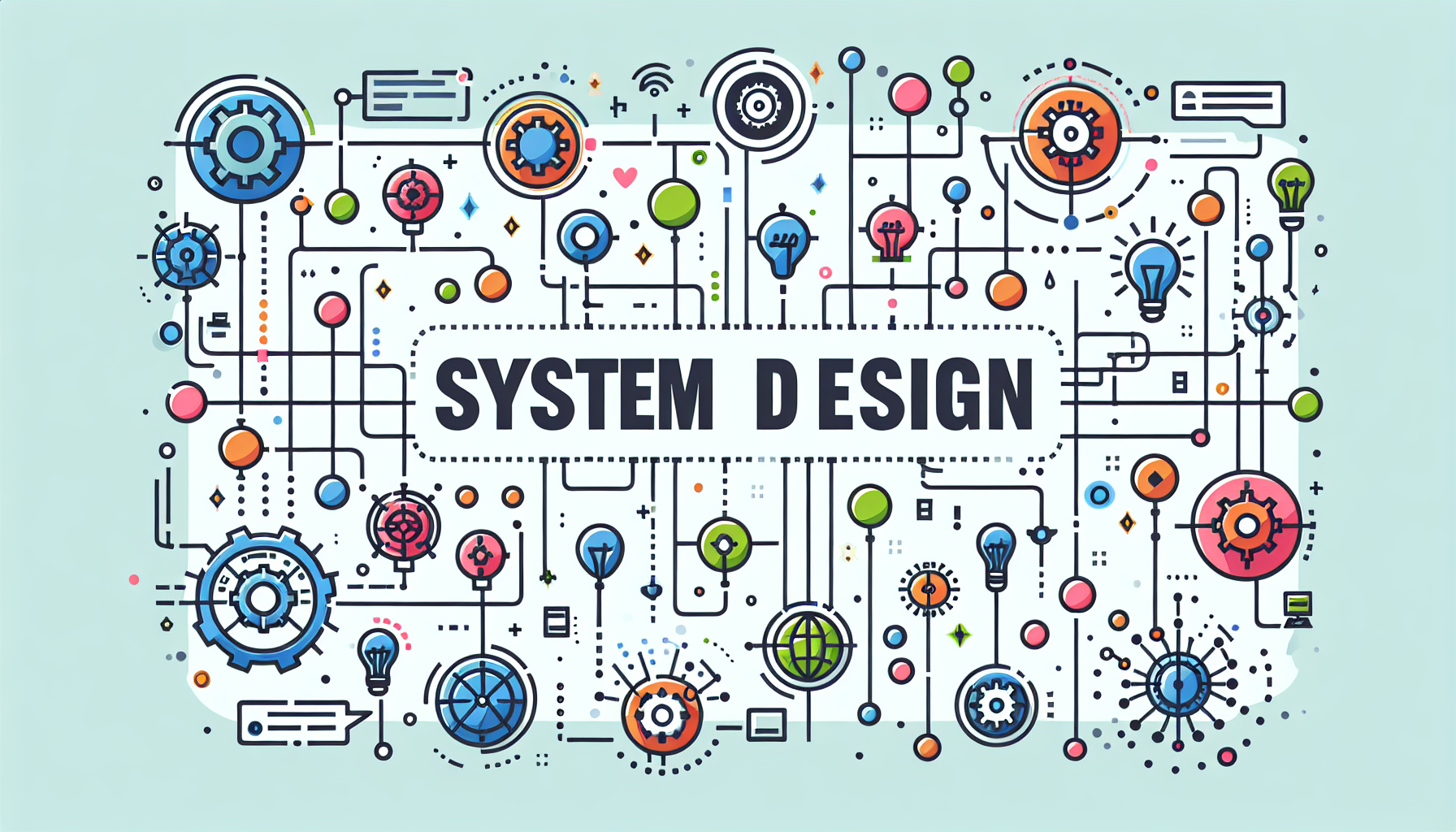In the world of software engineering, system design holds a crucial place. Whether you’re gearing up for a technical interview or looking to build scalable and efficient systems, understanding the fundamentals of system design is essential. This guide aims to introduce beginners to the key concepts and considerations in system design.
If you want to read on medium.com click here.What is System Design?
System design is the process of defining the architecture, components, modules, interfaces, and data for a system to satisfy specified requirements. It involves making high-level structural decisions and understanding how different components interact within a system. Essentially, it’s about creating a blueprint for how a system will function and how various parts will work together.
Why is System Design Important?
- Scalability: Proper system design ensures that your system can handle growth in terms of users, data, and transactions. As your user base grows, a well-designed system can scale seamlessly without performance degradation.
- Reliability: A well-designed system minimizes downtime and ensures smooth operations even during peak loads. Reliability is crucial for maintaining user trust and ensuring consistent service availability.
- Maintainability: Good design makes it easier to update, fix, and enhance the system over time. This means less technical debt and a more agile development process.
- Performance: Efficient system design optimizes resource usage and improves response times. This leads to a better user experience and can significantly impact the success of a product.
Key Concepts in System Design
- Scalability: This involves designing a system that can grow and manage increased demand. There are two types:
- Vertical Scaling: Adding more power (CPU, RAM) to an existing machine. This is often simpler but has physical limitations.
- Horizontal Scaling: Adding more machines to distribute the load. This approach is often more complex but provides better long-term scalability.
- Load Balancing: Distributing incoming network traffic across multiple servers to ensure no single server becomes a bottleneck. Load balancers can use various algorithms, such as round-robin, least connections, or IP hash, to distribute traffic efficiently.
- Caching: Storing copies of frequently accessed data in a cache to reduce latency and improve performance. Caching can occur at multiple levels, including client-side, server-side, and database-level.
- Database Design: Choosing the right database (SQL vs. NoSQL) and designing the schema to efficiently store and retrieve data. Key considerations include data consistency, partitioning, replication, and indexing.
- Microservices: Breaking down a large system into smaller, independent services that can be developed, deployed, and scaled independently. This approach promotes modularity and can improve fault isolation and team productivity.
- Consistency and Availability: Understanding the trade-offs between consistency, availability, and partition tolerance (CAP Theorem) in distributed systems. Depending on the use case, you might prioritize consistency (e.g., banking systems) or availability (e.g., social media).
Steps to Approach System Design
- Clarify Requirements: Understand the functional and non-functional requirements. Ask questions to clarify the scope and constraints. Are there specific performance metrics? What are the expected traffic patterns?
- Define System Interface: Specify the APIs and endpoints through which different components will interact. This includes defining the input and output for each service and ensuring they are well-documented.
- High-Level Design: Create a high-level diagram showing system components, their interactions, and data flow. This diagram should provide a clear overview of how the system will function and highlight key components.
- Detailed Design: Drill down into specific components, their responsibilities, and how they will be implemented. This includes choosing appropriate technologies, designing data models, and specifying communication protocols.
- Consider Trade-offs: Evaluate different design choices and their trade-offs in terms of scalability, performance, and complexity. For example, you might need to balance between read and write performance or decide between synchronous and asynchronous communication.
- Plan for Failures: Design for fault tolerance and redundancy to handle system failures gracefully. This includes implementing backup and recovery procedures, monitoring, and alerting systems.
Example: Designing a URL Shortener
Let’s walk through a brief example of designing a URL shortener:
- Clarify Requirements: The system should allow users to shorten URLs, redirect from short URLs to original URLs, and track usage statistics. Additionally, the system should handle a high volume of requests with low latency.
2. Define System Interface:
POST /shorten: Accepts a long URL and returns a short URL.GET /{short_url}: Redirects to the original long URL.GET /{short_url}/stats: Returns usage statistics.
3. High-Level Design:
- Client: User interface to input and display URLs.
- API Gateway: Handles incoming requests and routes them to appropriate services.
- URL Service: Manages URL shortening and redirection.
- Database: Stores URL mappings and statistics.
- Cache: Caches frequently accessed URLs.
4. Detailed Design:
- URL Service: Generates unique short URLs, stores them in the database, and handles redirections. It could use a base62 encoding to ensure short and unique URLs.
- Database: A NoSQL database like Redis for fast lookups, or a relational database like PostgreSQL if ACID properties are needed.
- Cache: Use Redis or Memcached to cache popular short URLs to reduce database load.
5. Consider Trade-offs:
- Consistency vs. Availability: Ensure that the short URL is unique (consistency) while maintaining high availability. For example, using a distributed lock might ensure uniqueness but could impact availability.
- Cache Invalidation: Implement a strategy to keep cache entries up-to-date, such as time-to-live (TTL) or cache invalidation on updates.
6. Plan for Failures:
- Redundancy: Deploy multiple instances of the URL service across different regions to ensure high availability.
- Backup: Regularly back up the database and use replication to ensure data durability.
Conclusion
System design is a critical skill for software engineers. By understanding and applying the core principles, you can design systems that are scalable, reliable, and maintainable. Remember to start with the requirements, create a high-level architecture, and then dive into the details

